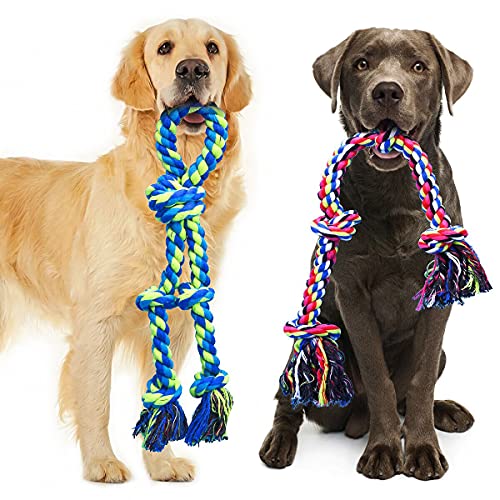Golden Retrievers are more than just adorable companions; they’re incredible service dogs that change lives every day. With their friendly nature and intelligence, these gentle giants have a knack for supporting people with disabilities, providing comfort and assistance in ways that often leave us in awe.
Overview of Golden Retriever Service Dogs
Golden Retrievers serve as invaluable companions and support animals, recognized for their ability to assist individuals with various disabilities. Their inherent qualities make them a top choice within the service dog community.
Importance in the Service Dog Community
Golden Retrievers play a crucial role in the service dog community. Their friendly nature fosters trust and comfort, essential for building strong bonds with their handlers. Organizations often select them for their ability to adapt to diverse environments and situations, allowing them to excel in roles such as mobility assistance, therapy support, and medical alert services. Their consistent presence can transform lives by providing not only practical assistance but also emotional support.
Characteristics that Make Them Ideal
Golden Retrievers possess several key characteristics that establish them as ideal service dogs:
- Intelligence: Golden Retrievers rank among the most intelligent dog breeds, facilitating quick learning and responsiveness to commands.
- Temperament: Their calm and friendly demeanor makes interactions with both handlers and the public smooth and positive.
- Trainability: They exhibit eagerness to please, enhancing their ability to undergo training and learn new tasks.
- Sensory Skills: Their keen sense of smell helps them perform critical tasks such as detecting medical conditions.
- Social Nature: Golden Retrievers thrive on human interaction, instilling a sense of security and companionship in their handlers.
These characteristics contribute to their effectiveness as service dogs, ensuring they can meet the unique needs of the individuals they assist.
Notable Success Stories
Golden Retrievers shine in various service roles, illustrating their capability and compassion in supporting those in need. Here are a couple of inspiring success stories.
Story of a Therapy Dog in a Hospital
This story highlights a Golden Retriever named Daisy, who works as a therapy dog in a children’s hospital. Daisy provides comfort to young patients undergoing treatments by offering companionship and warmth. Her gentle demeanor and playful spirit lift spirits, helping to ease anxiety and fear. Reports indicate that interactions with Daisy help children manage pain and cope with the stress of hospital stays. Feedback from parents also emphasizes how Daisy creates a supportive environment, fostering emotional healing during tough times.
Golden Retrievers Assisting Veterans
Golden Retrievers also excel in supporting veterans. One touching example involves a veteran named Tom, who struggled with PTSD. His service dog, Buddy, became a lifeline. Buddy detects episodes of anxiety and nudges Tom for reassurance, breaking the cycle of overwhelming feelings. Many veterans like Tom find that Golden Retrievers empower them to reintegrate into daily life. Statistics show service dogs significantly reduce symptoms of PTSD in veterans, restoring independence and improving mental well-being. The bond between these veterans and their canine companions showcases the transformative impact of support animals.
Training and Preparation
Training and preparation play critical roles in developing Golden Retrievers into successful service dogs. These processes ensure they’re equipped to assist their handlers effectively.
Key Training Techniques
I focus on several key training techniques when preparing Golden Retrievers for service roles:
- Positive Reinforcement: This method uses rewards to encourage desired behaviors. Treats, praise, or play motivate Golden Retrievers to learn commands effectively.
- Command Training: Core commands like “sit,” “stay,” “come,” and “heel” form the foundation of their training. Mastery of these commands enhances their reliability in various situations.
- Task-Specific Training: Tailoring training to specific tasks helps Golden Retrievers learn how to assist with unique needs. For example, training for mobility assistance may involve learning to retrieve items or brace against a handler.
- Gradual Exposure: I gradually introduce new environments to acclimatize the dogs to different settings. This exposure helps them adapt to sights, sounds, and smells, improving their confidence and performance.
Socialization and Real-Life Application
Socialization remains fundamental for Golden Retrievers. It enhances their ability to interact comfortably with people and other animals. I prioritize exposure to various environments, including parks, stores, and busy streets, to build their confidence and social skills.
Practicing real-life scenarios also proves beneficial. I simulate situations, such as handling crowds or navigating public transportation, to ensure they respond appropriately in public. These experiences prepare Golden Retrievers to remain calm and focused while assisting their handlers, ensuring they can effectively meet any challenge.
Impact on Owners and Communities
Golden Retrievers significantly impact both their owners and surrounding communities. These service dogs provide essential support and cultivate stronger connections among individuals.
Emotional Support and Companionship
Golden Retrievers excel at delivering emotional support and companionship. Their natural friendliness reinforces trust between them and their handlers. For individuals with anxiety or depression, having a Golden Retriever nearby can alleviate feelings of isolation. Many handlers report enhanced happiness and reduced stress levels, showcasing the transformative power of these dogs. In the case of veterans like Tom, whose story highlights how Buddy provides comfort during anxiety episodes, the emotional connection fosters a sense of safety and normalcy. This relationship not only benefits the owners but also encourages a supportive atmosphere in their communities.

Positive Community Reactions
« Unlocking Golden Retriever Club Benefits for New Owners: Enhance Your Dog’s Journey
The Ultimate Golden Retriever Puppy Crate Size Guide: Choose Wisely for Comfort and Training »
Golden Retrievers often evoke positive reactions from community members. Their friendly demeanor captivates onlookers, sparking conversations and raising awareness about the importance of service animals. When people see Golden Retrievers assisting their handlers, they witness the strong bond and mutual reliance. Many community members express admiration and understanding, creating an environment where disability awareness and acceptance thrive. Additionally, therapy dogs, such as Daisy in the children’s hospital, help bridge gaps in social interaction, allowing families and children to feel more at ease. This visible representation of service dogs fosters empathy and promotes collaboration within the community, making it a more inclusive place for everyone.
Conclusion
Golden Retrievers truly embody the spirit of service and companionship. Their ability to connect with people on an emotional level is nothing short of amazing. I love hearing the success stories that showcase their impact on the lives of so many.
These dogs not only provide assistance but also bring joy and comfort to those in need. Whether it’s a therapy dog brightening a child’s day or a service dog helping a veteran navigate daily challenges, their contributions are invaluable.
As we continue to celebrate these remarkable animals, I can’t help but feel grateful for the love and support they offer. Golden Retrievers remind us of the deep bonds we can share and the positive change we can create together.

















